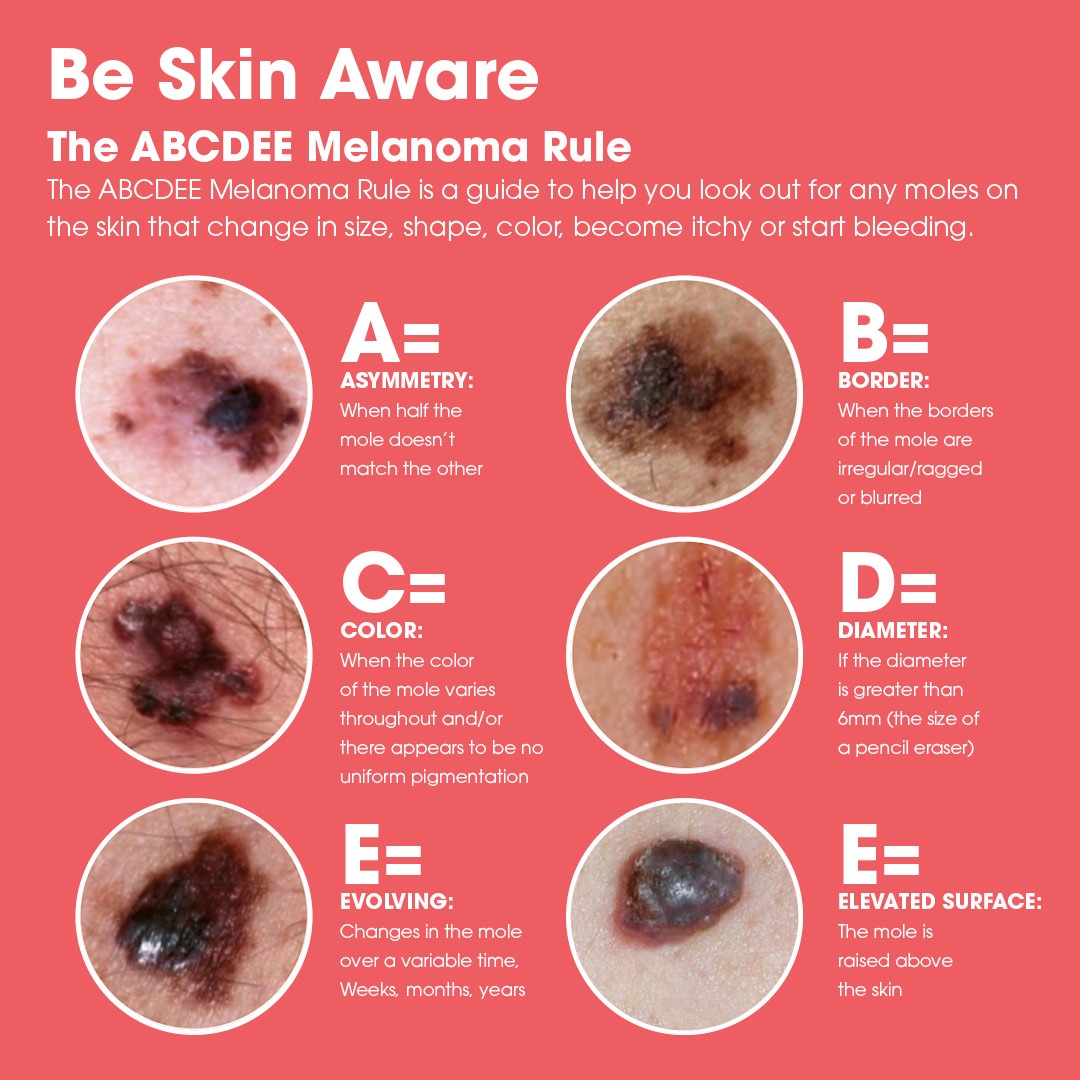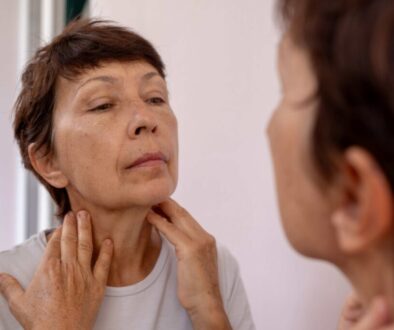Best Sunscreens and Other Tips to Prevent Skin Cancer
May is Skin Cancer Awareness Month, a crucial time to highlight the importance of protecting our skin from the harmful effects of the sun. Skin cancer is the most common cancer in the United States, yet it is highly preventable with proper care and awareness. Let’s explore skin cancer statistics, the types of skin cancer and how to recognize them, the best sunscreens, and offer other effective ways to safeguard your skin.
Understanding Skin Cancer: Key Statistics
Skin cancer can affect anyone, regardless of age, skin type, or lifestyle. Here are some alarming statistics that underscore the importance of skin cancer awareness:
- Prevalence: More than 5 million skin cancer cases are diagnosed in the United States each year.
- Lifetime Risk: One in five Americans will develop skin cancer by the age of 70.
- Mortality: An estimated 7,000 people die from melanoma in the U.S. annually.
- Rising Rates: Over the past three decades, more people have had skin cancer than all other cancers combined.
These statistics highlight the critical need for increased awareness and proactive measures to prevent skin cancer.
Types of Skin Cancer
Early detection and treatment for skin cancer are crucial for a positive outcome. That’s why it’s important to understand the different types of skin cancer, their characteristics, and how to recognize them. Let’s take a closer look at basal cell carcinoma (BCC), squamous cell carcinoma (SCC), and melanoma.
Basal Cell Carcinoma (BCC)
Overview: Basal cell carcinoma is the most common type of skin cancer. It originates in the basal cells, which are found in the deepest layer of the epidermis.
Appearance: BCC often appears as a pearly or waxy bump, a flat, flesh-colored or brown scar-like lesion, or a bleeding or scabbing sore that heals and returns.
Common Locations: BCC frequently occurs on sun-exposed areas such as the face, neck, and arms.
Risk Factors: Prolonged sun exposure, fair skin, and a history of sunburns increase the risk of developing BCC.
Squamous Cell Carcinoma (SCC)
Overview: Squamous cell carcinoma is the second most common type of skin cancer. It arises from the squamous cells, which make up most of the skin’s upper layers.
Appearance: SCC typically manifests as a firm, red nodule, a flat sore with a scaly crust, or a new sore or raised area on an old scar or ulcer.
Common Locations: SCC is most often found on sun-exposed areas like the face, ears, neck, lips, and hands.
Risk Factors: Sun exposure, fair skin, a history of precancerous skin lesions, and a weakened immune system are significant risk factors.
Melanoma
Overview: Melanoma is the most dangerous form of skin cancer, originating in the melanocytes, the cells that produce pigment (melanin).
Appearance: Melanoma can develop in an existing mole or appear as a new dark spot. It may exhibit irregular borders, multiple colors, and changes in size or shape.
Common Locations: Melanoma can appear anywhere on the body but is often found on the trunk in men and the legs in women, as well as on the neck and face.
Risk Factors: Severe sunburns, fair skin, a large number of moles, and a family history of melanoma increase the risk of this cancer.
How to Recognize Skin Cancer
Early detection of skin cancer significantly improves treatment outcomes. Here are some guidelines to help you recognize potential skin cancers.
The ABCDEs of Melanoma

A – Asymmetry: One half of the mole or spot doesn’t match the other half.
B – Border: The edges are irregular, ragged, notched, or blurred.
C – Color: The color is not uniform and may include shades of brown, black, pink, red, white, or blue.
D – Diameter: The spot is larger than 6 millimeters across (about the size of a pencil eraser), although melanomas can be smaller.
E – Evolving: The mole or spot changes in size, shape, or color over time.
Other Warning Signs
New Growths: Any new skin growth that appears suddenly and grows rapidly.
Sores That Don’t Heal: Persistent sores that do not heal or keep recurring.
Changes in Existing Moles: Alterations in color, texture, size, or shape of existing moles.
Unusual Skin Changes: Redness or swelling beyond the border of a mole, itchiness, tenderness, or pain.
“Any time you have a sudden or persistent change in the skin, it’s really best to play it safe and see a dermatologist. Maybe you see something appear on your face, your belly or back, or one of your limbs that you never noticed before. Months go by and it gets bigger or changes shape – this would be something you wouldn’t want to ignore,” says Dr. Stanton S. Lebouitz, MD, of Dermatology Partners in York, Pennsylvania.
“Bleeding is also a big one. Bleeding can be another red flag for basal cell or squamous cell carcinoma.”
When to See a Dermatologist
If you notice any of these warning signs or any other unusual changes in your skin, it’s essential to consult a dermatologist promptly. Regular self-examinations and annual skin checks by a healthcare professional are crucial for early detection and prevention of skin cancer.
Avoiding Skin Cancer: Best Sunscreens for Optimal Protection
Broad-Spectrum Protection
What It Means: Look for a sunscreen labeled as “broad-spectrum,” which means it protects against both UVA and UVB rays.
Why It Matters: UVB rays cause sunburn and play a significant role in developing skin cancer, while UVA rays penetrate deeper into the skin and contribute to premature aging and skin cancer. Broad-spectrum sunscreens provide comprehensive protection against both types of UV radiation.
Sun Protection Factor (SPF)
SPF Value: Choose a sunscreen with an SPF of 30 or higher.
Why It Matters: SPF measures the level of protection against UVB rays. SPF 30 blocks approximately 97% of UVB rays, while higher SPFs provide slightly more protection. However, no sunscreen can block 100% of UV rays.
Water Resistance
What to Look For: Ensure the sunscreen is water-resistant if you plan to swim or sweat.
Why It Matters: Water-resistant sunscreens stay effective for 40 to 80 minutes while swimming or sweating, offering extended protection during outdoor activities. Remember to reapply after swimming, sweating, or towel drying.
Skin Type Compatibility
For Sensitive Skin: Opt for sunscreens labeled as “hypoallergenic” or “fragrance-free” to reduce the risk of irritation.
For Oily or Acne-Prone Skin: Choose “non-comedogenic” sunscreens that won’t clog pores.
For Dry Skin: Look for sunscreens with moisturizing ingredients such as hyaluronic acid or glycerin.
Active Ingredients
Mineral vs. Chemical: Decide between mineral (physical) and chemical sunscreens based on your skin type and preferences.
Mineral Sunscreens: Contain zinc oxide or titanium dioxide and work by physically blocking UV rays. They are often recommended for sensitive skin and provide immediate protection upon application.
Chemical Sunscreens: Contain ingredients like avobenzone, oxybenzone, and octocrylene. They absorb UV radiation and convert it into heat, which is then released from the skin. They tend to be less visible on the skin and are better for daily use under makeup.
Additional Protective Ingredients
Antioxidants: Some sunscreens contain antioxidants such as vitamins C and E, which help protect against environmental damage and support skin health.
Moisturizers: Ingredients like aloe vera, glycerin, and hyaluronic acid can help keep your skin hydrated while providing sun protection.
Ease of Application
Texture and Form: Sunscreens come in various forms, including lotions, creams, gels, sticks, and sprays. Choose a form that you find easy and comfortable to apply, ensuring you’re more likely to use it consistently.
Blendability: Ensure the sunscreen blends well into your skin tone without leaving a white cast, especially important for people with darker skin tones.
Packaging and Expiry Date
Expiry Date: Check the expiration date to ensure the sunscreen is still effective.
Packaging: Opt for packaging that protects the product from direct sunlight and contamination.
By considering all these factors, you can select a sunscreen that provides the best protection for your skin, suits your individual needs, and supports your overall skin health. Remember, consistent and correct use of sunscreen is crucial for effective sun protection.
Additional Ways to Protect Your Skin Against Skin Cancer
While sunscreen is essential, it’s not the only way to protect your skin from the sun’s harmful rays. Here are other effective strategies:
Wear Protective Clothing
- Hats: Wide-brimmed hats provide shade and protect your face, neck, and ears.
- Clothing: Long-sleeved shirts and long pants made of tightly woven fabrics offer additional protection.
- UV-Protective Gear: Clothing with built-in UV protection provides an extra layer of defense.
Seek Shade
- Avoid Peak Sun Hours: The sun’s rays are strongest between 10 a.m. and 4 p.m. Try to stay in the shade during these hours.
- Use Umbrellas and Awnings: These can provide portable shade when you’re outdoors.
Avoid Tanning Beds
- UV light from tanning beds can increase your risk of skin cancer.
Wear Sunglasses
- UV Protection: Sunglasses that block 100% of UV rays help protect your eyes and the delicate skin around them.
Get Regular Skin Checks
- Self-Examinations: Regularly check your skin for any new or changing moles or spots. Use the ABCDE rule (Asymmetry, Border, Color, Diameter, Evolving) to identify potential concerns.
- Professional Exams: Schedule annual skin exams with a dermatologist for a thorough check-up.
Skin Cancer Awareness Month is a vital reminder of the importance of sun protection and skin cancer prevention. By understanding the risks, using effective sunscreens, and adopting additional protective measures, you can significantly reduce your risk of skin cancer. Remember, early detection is key, so stay vigilant and proactive about your skin health.












